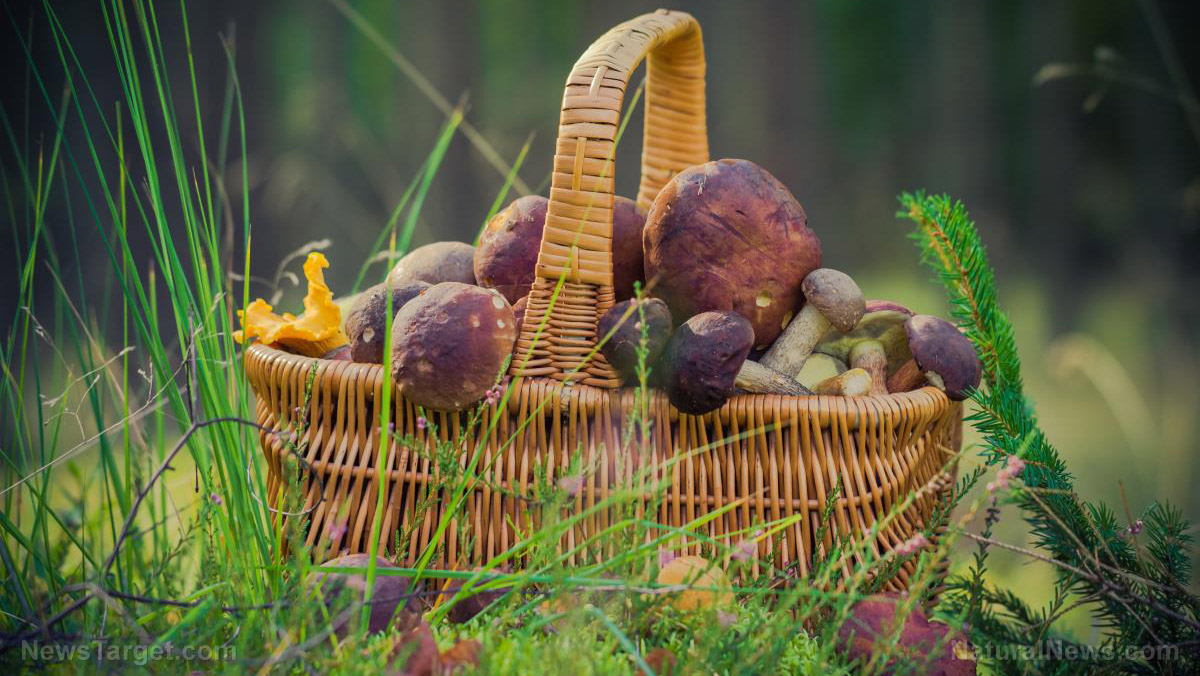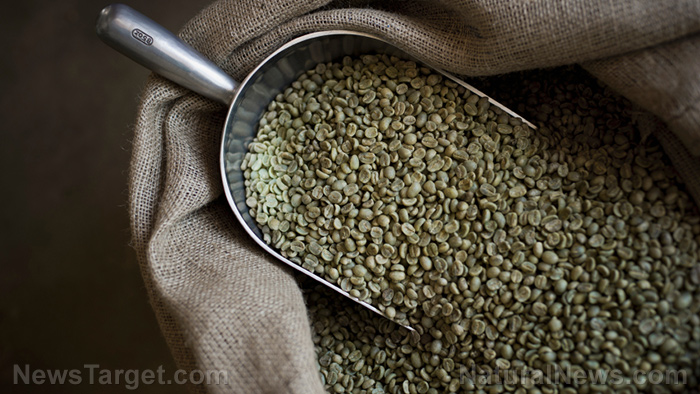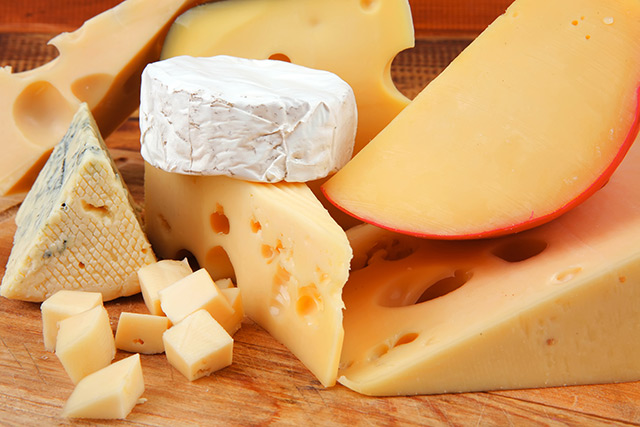 Parler
Parler Gab
Gab
Why grow mushrooms?
With the right tools and resources, growing mushrooms is safe, easy and maybe even free. Unlike a full-sized garden that requires a lot of your time, money and effort, a mushroom garden doesn't require fancy equipment or ingredients. If you're strapped for cash, start by learning how to forage mushrooms properly, making sure to learn how to identify species that are safe to eat and those that are poisonous. Mushroom gardens can be an essential part of your backyard growing system because:- They are easy to establish.
- They can support your home garden ecosystem as they grow.
- They can produce regular harvests of delicious mushrooms for your meals.
Best mushroom species for home gardens
Here are some of the best mushrooms to grow for beginners: King stropharia (Stropharia rugosoannulata) King stropharia will grow in wood chip gardens. It's best to use hardwood wood chips, but king stropharia will also grow in straw and many other farm waste products. King stropharia grows in a very broad range of temperatures, from about 41 to 95 F (5 to 35 C), so they're suited for both temperate and subtropical climates. These mushrooms require good moisture, so water them regularly. King stropharia will take four to six months from inoculation to fruiting, which may vary depending on inoculation rates and which substrate you use. Pearl oyster (Pleurotus ostreatus) If you want to start small, you can grow pearl oyster mushrooms via bucket or jar cultivation. There are many Pleurotus species, such as Pleurotus djamor (pink oyster), Pleurotus citrinopileatus (golden oyster) and Pleurotus eryngii (king oyster). Oyster mushrooms prefer pasteurized straw or sawdust, but they will fruit well on most farm waste products like cellulose and lignin. These mushrooms prefer hardwood logs or stumps for outdoor cultivation. If you're using coffee grounds, make sure you use them while they are very fresh since the grounds have a relatively high nutrient content and can be prone to contamination. Pearl oyster are adaptable and will tolerate a range of growing conditions. They can fruit from 45 to 77 F (7 to 25 C). Pearl oyster will grow quickly, taking around two to three weeks for indoor cultivation, depending on ambient temperature and the inoculation rates of the substrate used. Shiitake (Lentinula edodes) Shiitake is suitable for gardeners starting outdoor cultivation. You can grow them on logs in your garden. Shiitake prefers fruiting substrates like hardwood logs of almost every type. Note that yields will vary according to the log species. Eucalyptus works well if you can't find alder, beech or oak. Shiitake can also be grown on sawdust. Some strains of shiitake can fruit between 57 and 68 F (14 and 20 C). This is a wide enough bracket for most temperate climates. Note that there are colder and warmer strains that fruit below and above that temperature range. Shiitake takes a while to grow. When grown on logs, they can take six to 12 months or longer, depending on the climate and inoculation rates of the log. When grown on sawdust blocks, shiitake will take around seven to 10 weeks. Velvet pioppini (Agrocybe aegerita) Velvet pioppini is native to poplar wood and has a nutty bite. Use it for stir-fries and other cooking methods. Velvet pioppini prefers hardwood sawdust and suits jar cultivation. Velvet pioppini will also grow well on logs and stumps. This mushroom prefers temperatures of around 55 to 64 F (13 to 18 C). The mushrooms usually fruit in the spring, after the colder months. Velvet pioppini grows after eight to 12 months for outdoor log cultivation or about six weeks for indoor cultivation.Tips for growing mushrooms indoors
It may seem unusual but it's actually easier to grow mushrooms indoors. Since you can control the conditions, they grow much quicker indoors than they would outside. When growing mushrooms, you can buy growing kits to make things easier or start from scratch on your own. If you want to try using growing kits, buy them from reputable dealers. Spore or spawn? You can buy either spore or spawn. Imagine mushroom spores as seeds and spawn as seedlings. Note that spawn will be much easier to grow for beginners. Choose the right location Mushrooms prefer a cool, dark and damp location, like a basement, inside a cabinet or inside a closet. To save money, you can grow mushrooms on empty salad containers you get at the grocery store. Choose a container that is at least six inches deep to allow the mycelium or a mushroom root system to grow. Starting mushrooms Different mushrooms will prefer different mediums. Some mushrooms thrive in coffee grounds while others prefer sawdust. To start mushrooms, place the spawn on its preferred growing medium. It's best to start mushrooms at 70 F. Use a thermometer to ensure that you have the right temperature for your mushrooms. If necessary, place their container on a heating pad to help warm up the mushrooms. For the first few days, mushrooms must remain undisturbed. Limit their exposure to heat, light and drafts. Once mushrooms have rooted, you can lower the temperature. Do this only after several weeks. Like growing mediums, each mushroom has a preferred temperature. When you lower the temperature, cover the spawn with an inch of potting soil. Cover the soil with a damp cloth and spray the cloth with water to keep it wet. Unlike plants, mushrooms don’t contain chlorophyll so they don’t require sunlight to grow. Once you harvest a mushroom, its stem will rot away. Sometimes, new mushrooms may emerge and grow from other spawns or spores. If you want to have a continuous crop, add more spawn. Harvesting mushrooms Mushrooms will be ready to harvest when the cap has fully opened and separated from the stem, which should take an average of about three to four weeks. Don't pull mushrooms because this may damage the surrounding fungi. Instead, use a sharp knife to cut the mushroom right on the stalk.When is the best time to start growing mushrooms?
Since different species of mushrooms will thrive in slightly different growing conditions, you need to check when you should start your garden. Mycelium will take several months to run through the substrate, so don't expose it to freezing winters or hot dry summers during this phase. Extreme temperatures could kill a freshly inoculated bed or tub, but once the mycelium is established it will be more hardy. Ideally, you should establish your garden in the milder part of the year, when the temperature is unlikely to go below freezing or above 90 F (30 C). If you live in an area with hot dry summers where the soil won't freeze in winter, you should start your garden during fall or early spring to give it the best chance. For those who live in areas with very cold winters, you can start your garden in late spring to early summer. This ensures that your garden will have time to get established before having to deal with very cold temperatures. If your climate is very cold you might need to protect your bed with a greenhouse or bring your tub indoors. Before SHTF, learn how to grow mushrooms for daily eating and for your survival stockpile. Watch the video below to know more about how to grow mushrooms on logs. This video is from the Nature's Always Right channel on Brighteon.com.More related stories:
5 Medicinal mushrooms you can grow in your home garden or forage in your backyard. Food supply 101: How to grow edible mushrooms in your basement. 12 Wild summer edibles to harvest for your food stockpile. Sources: Milkwood.net GardenTherapy.ca Brighteon.comStudy: Green coffee bean extract can help people lose weight
By Zoey Sky // Share
Study shows combining quercetin and tocotrienols can help fight cancer
By Zoey Sky // Share
Without Russian gas, Germany won’t survive this next winter
By Ethan Huff // Share
Healthy habits that can boost brain health
By Zoey Sky // Share
Study shows antioxidants in cheese can protect blood vessels from salt damage
By Zoey Sky // Share
Governments continue to obscure COVID-19 vaccine data amid rising concerns over excess deaths
By patricklewis // Share
Tech giant Microsoft backs EXTINCTION with its support of carbon capture programs
By ramontomeydw // Share
Germany to resume arms exports to Israel despite repeated ceasefire violations
By isabelle // Share










